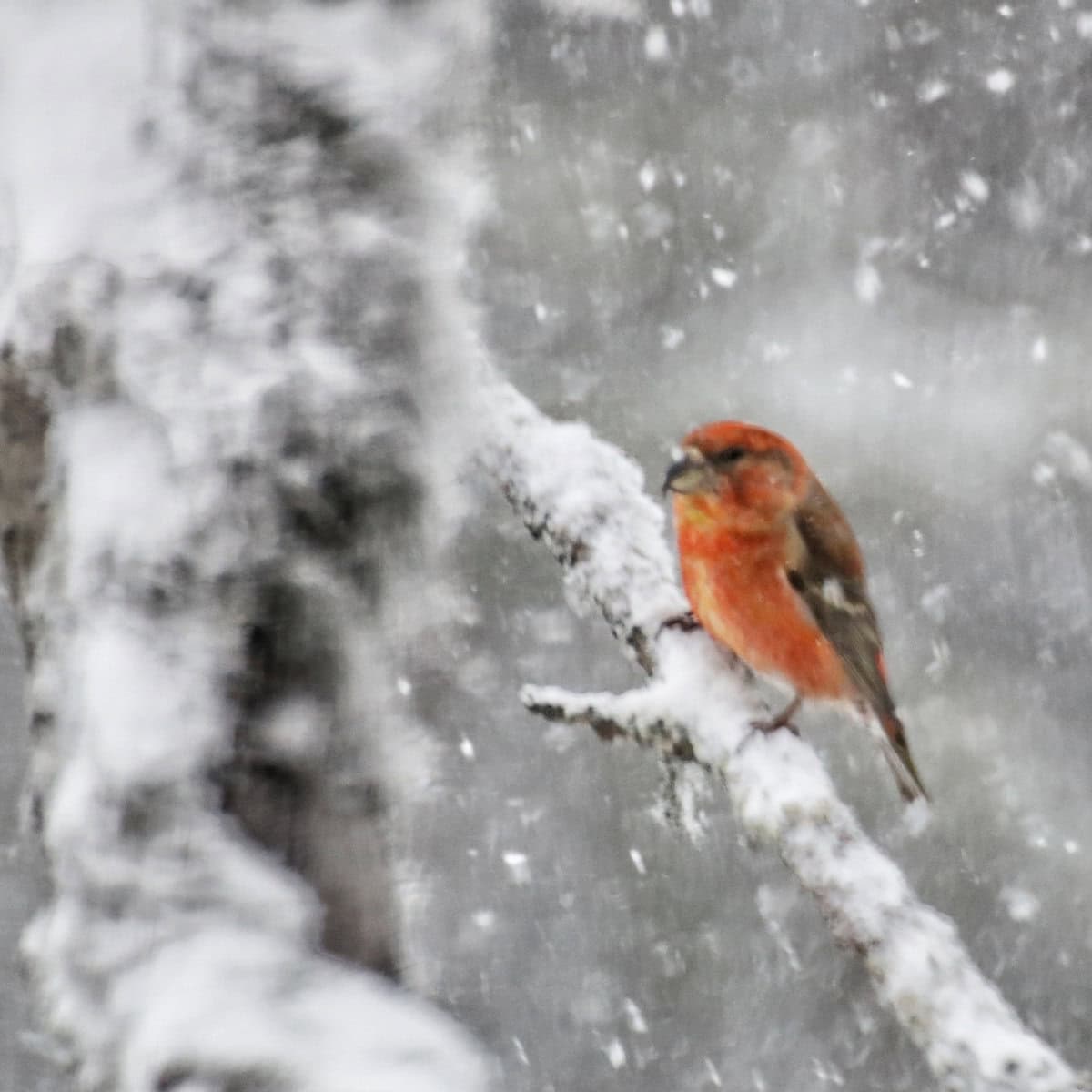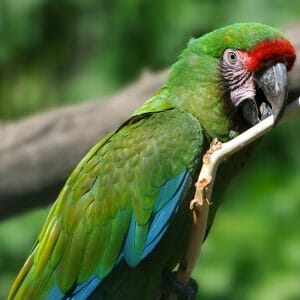
At Last, The Secret To How Do Birds Stay Alive During Winter Is Revealed
Last Updated on by Mitch Rezman
Quora is a cool place for content. Unfortunately, there are a lot of amateurs answering questions with some, well, wrong answers. This particular question ran off the rails quite early.
With 10,400 (plus or minus) species of birds, the question is rather vague. Parrots a.k.a. hookbills, parakeets, and conures all generally reside in temperate climates. One exception we know quite well here in Chicago is the Monk parakeet or Quaker parrot.
Urban legend has it that a small flock escaped from a container at O’Hare airport decades ago. They now reside mainly on the south side of Chicago along the lake near the Museum of Science and Industry.
Keeping warm during the winter, but in that they are the only parrot that builds a stick nest, they build very large communal nests and keep each other warm living by the dozens.
I am sure they get food from open garbage containers near restaurants around the city plus the citizens of Chicago have taken them under their wings and many put out food for them.
The Kea is an Alpine parrot found in forested and alpine regions of the South Island of New Zealand and enjoys cold weather.
Red & White-winged Crossbill – Northern Goshawk – Snow Bunting – Lapland Longspur – Ross’s & Snow Geese – Bohemian Waxwing – Evening Grosbeak – Snowy Owl – Rosy-Finch – Hoary & Common Redpoll are all considered “winter” birds.
The Arctic Tern migrates from one polar region to another and back for a total of about 60,000 miles and it goes from cold to cold.
Because they can live between 15 and 30 years they could fly upwards of almost 2 million miles over their lifetime which is about four round trips to the moon and back.
The only species of bird known to hibernate throughout the winter is the common poorwill.
Related to the night jar they are found in the Western states of our country like California and New Mexico.
It’s a nocturnal hunter (parrots are diurnal – active during daylight hours while sleeping at night) but when it cannot find food to survive during the cold winter it hides in the rocky crevices of the outcrop where it resides.
In the UK young swifts fall into what’s called a state of “torpor” where they reduce both body temperature and metabolism which saves energy. This is done for shorter periods until conditions improve enough to allow them to seek food.
Birds such as hummingbirds, night jars, and swifts all employ torpor as a survival strategy at one time or another but it’s only a short-term solution sometimes just to get through a single cold night.
Per NPR (radio): “In many Holarctic bird species, migration phenology is adjusting towards an earlier arrival to breeding grounds to accommodate the earlier onset of spring [brought about by global warming].
In addition, an increasing number of studies have also reported that Holarctic migrants are shortening their migration and overwinter at higher latitudes closer to their breeding grounds.”
Editors note: Holarctic is the name for the biogeographic realm that encompasses the majority of habitats found throughout the northern continents of the world.
Some North American robins are known to get complacent during late fall and early winter, thus trapped by a sudden winter storm.
Written by Mitch Rezman
Approved by Catherine Tobsing
Your Zygodactyl Footnote
Urban pigeons seek warmth anywhere they can get it.
Author Profile
Latest entries
 The Traveling BirdJune 26, 2025Can You Name 5 Parrot Species That Are Living Wild in the USA?
The Traveling BirdJune 26, 2025Can You Name 5 Parrot Species That Are Living Wild in the USA? Bird BehaviorJune 26, 2025How is it Parrots Are Problem Solvers Social Animals and Even Use Tools?
Bird BehaviorJune 26, 2025How is it Parrots Are Problem Solvers Social Animals and Even Use Tools? Bird & Parrot AnatomyJune 25, 2025How a Tiny Chemical Modification Makes Parrots Nature’s Living Paintings
Bird & Parrot AnatomyJune 25, 2025How a Tiny Chemical Modification Makes Parrots Nature’s Living Paintings PigeonsJune 20, 2025How Do Parrots Thrive in Cities Outside Their Native Habitats?
PigeonsJune 20, 2025How Do Parrots Thrive in Cities Outside Their Native Habitats?
This Post Has One Comment
Leave a Reply
You must be logged in to post a comment.



Bryan E Born
28 Jan 2024Thank you for that interesting post, Mitch. This is truly amazing about the wild Monk/Quaker parakeets surviving in the harsh Chicago winters. I saw what your temps were just a few days ago!
Similarly, wild non-native lovebirds now been seen across most of the metro Phoenix area. I do not know how they originally escaped into the open? I would imagine from zoos, bird farms or outdoor aviaries? Although it rarely gets much below freezing there, they would also need to endure the long scorching summers. I live in a higher elevation of Arizona, with more temperate summers but where it can also get well below freezing. We have hummingbirds here even in wintertime.
As for my own little parrots, I keep them warm and cozy. Electric-only heat has been a concern of mine, however, if there is a winter snowstorm outage. Your post last week about the Mr. Heaters being a good backup source did relieve my concerns. I own one of their “Big Buddy” indoor propane units for emergencies but have not need to use yet, fortunately.
Thanks again to you and Catherine for the great info you share with us each week and stay warm!
– Bryan in Payson AZ